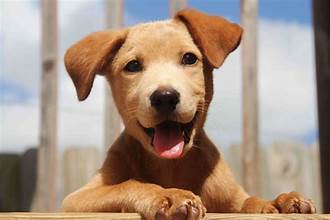Housebreaking, or potty training, is essential to raising a puppy.
Here’s a general guide to get you started:
Set Up a Schedule:
Puppies have small bladders and can’t hold them for long. Take your puppy outside frequently, at least every two hours during the day.
- First thing in the morning
- Right after waking up from a nap
- During and after playtime
- After eating or drinking
Create a Potty Spot:
Choose a specific area outside where you want your puppy to eliminate. Take your puppy to this spot on a leash every time you take them out, ensuring you have control over their movements.
Use a Cue Word:
Using a specific cue word like ‘go potty’ or ‘do your business’ while your puppy is eliminating can help them associate the word with the action.
Reward Eliminating Outdoors:
When your puppy eliminates outdoors, praise them immediately and offer a treat. This positive reinforcement helps them associate going potty outside with good things.
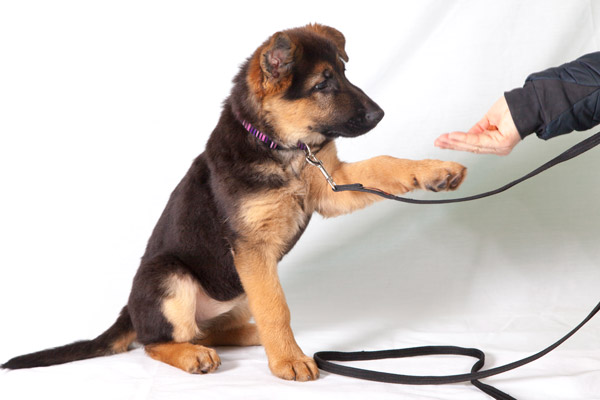
Manage Accidents:
It’s crucial to clean accidents thoroughly. Not only will it remove any odors that might attract your puppy back to that spot, but also help prevent repeat incidents and maintain a clean environment for your puppy.
Accidents happen, especially during the learning process. It’s a normal part of the journey, so don’t be too hard on yourself or your puppy. Remember, punishment can make them fearful of elimination altogether. Instead, focus on the positive steps they’re taking towards learning and be patient with them.
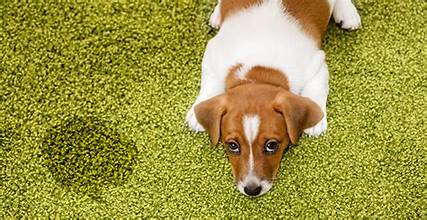
If you catch them in the act, interrupt with a firm “no” and immediately take them outside to finish eliminating them
Clean the accident thoroughly with an enzymatic cleaner, such as an angry orange stain remover. This type of cleaner breaks down the organic compounds in urine, eliminating any lingering odors that might tempt your puppy to go there again.
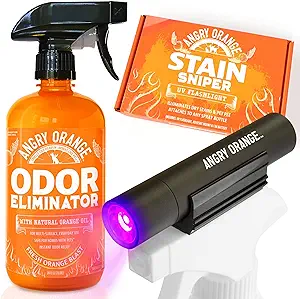
Confinement and Supervision:
One of the most effective ways to manage your puppy’s behavior is to confine it when you cannot supervise it directly. Whether in a crate or a small, puppy-proofed area, this practice is critical in preventing accidents and swiftly addressing indoor potty issues. Remember, this is not about punishment but about creating a safe and comfortable environment for your puppy to learn and grow, giving you confidence in your training methods.
Confine your puppy to a crate or a puppy playpen when you can’t supervise them directly. It will help prevent accidents and provide a safe space for them to relax.
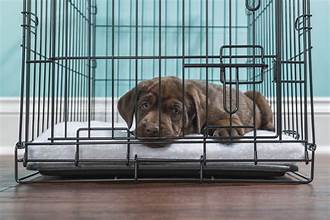
During free time indoors, keep a close eye on your puppy to catch elimination cues. These could include sniffing the ground, circling a specific area, or suddenly becoming restless. If you notice any of these signs, take your puppy outside to their potty spot immediately.
Be Patient and Consistent:
Housebreaking takes time and patience. Be consistent with the schedule, potty spot, and praise/reward system. Most puppies can achieve reasonable bladder control by six months and bowel control by eight months. Remember, each successful outdoor elimination is a step closer to a well-trained puppy. Don’t get discouraged by accidents. With consistent positive reinforcement, your puppy will learn the desired behavior, and you’ll see the progress.
Here are some additional resources that you may find helpful:
- Let’s start with the American Kennel Club, a trusted resource for all things dog-related:
- https://www.akc.org/expert-advice/training/how-to-potty-train-a-puppy/
- The Humane Society of the United States:
- https://www.akc.org/expert-advice/training/how-to-potty-train-a-puppy/
Disclosure: This blog contains some affiliate links to Amazon. I might receive a commission if you follow them and purchase anything from the recommended products. I use Amazon for all of my pet products, and I can assure you that I never recommend anything I don’t trust. Thanks for supporting positvelypets.com!

